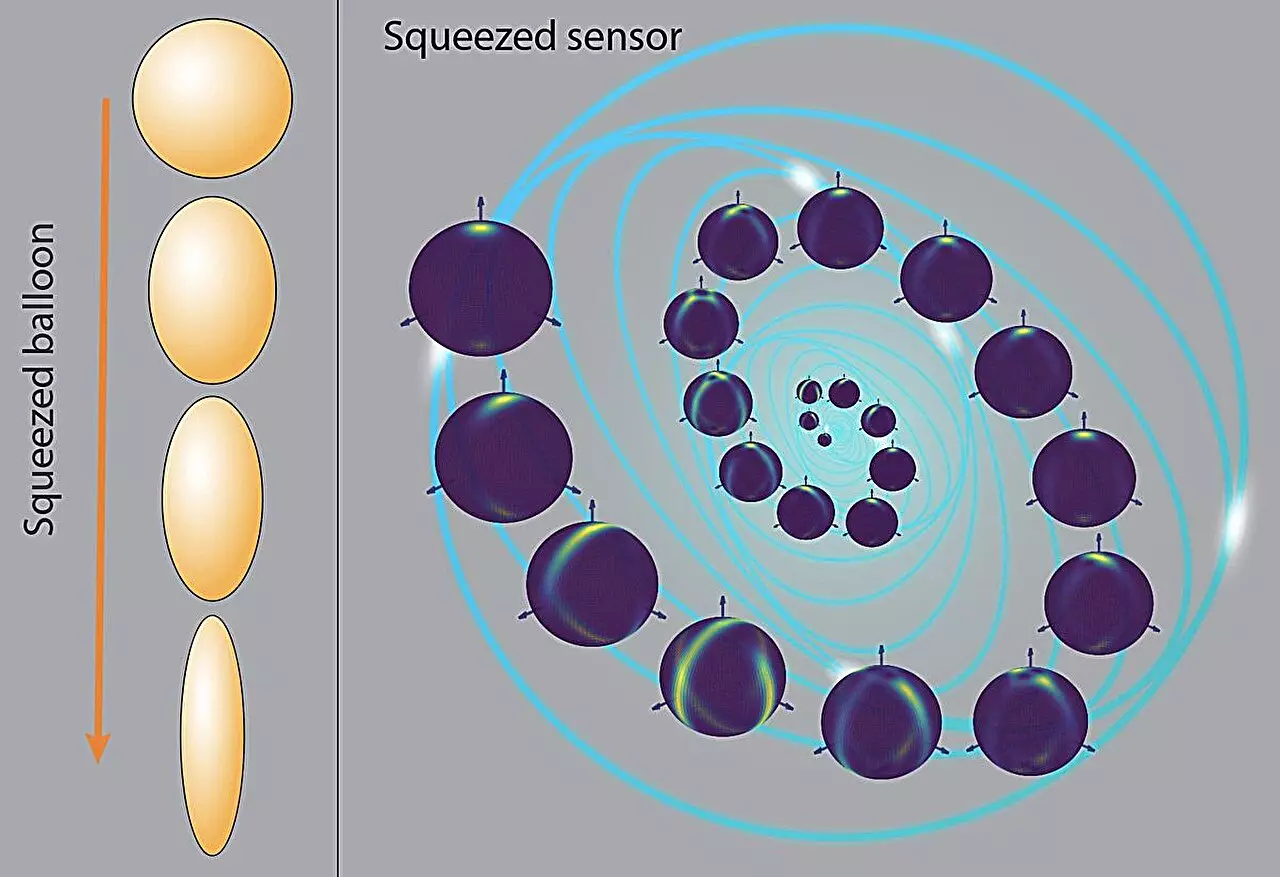Quantum squeezing represents an intriguing aspect of quantum physics that captures the imagination of scientists and engineers alike. The principle of this phenomenon operates on the idea that the inherent uncertainties within quantum systems can be manipulated. To visualize this, consider a simple round balloon. When you squeeze one part of the balloon, its shape becomes distorted; it flattens on one side while expanding on the other. This duality reflects the core idea of quantum squeezing: as we decrease uncertainty in one variable—such as position—we inadvertently increase uncertainty in another—like momentum. However, this transformation does not merely serve as a conceptual exercise; instead, it holds practical applications that could revolutionize various fields, from quantum computing to advanced measurement techniques.
The remarkable capability of quantum squeezing to enhance measurement precision is particularly notable in applications that require the accuracy of a single variable. For instance, atomic clocks—critical components in GPS technology—can achieve unprecedented levels of precision through the implementation of squeezed states. These clocks rely on minimizing uncertainty in time measurement, allowing them to provide accurate readings with an error margin that was previously unreachable.
However, the challenge amplifies when dealing with multiple variables that need to be measured at the same time, especially when those variables exhibit interconnected properties. This scenario draws the attention of researchers like Dr. Le Bin Ho from Tohoku University, who, in a recent publication in Physical Review Research, investigates the effectiveness of utilizing quantum squeezing in these complex environments.
Dr. Ho’s research delves into the interactions between a three-dimensional magnetic field and identical two-level quantum systems—bringing together theoretical analysis and numerical simulations to examine the feasibility of achieving maximum precision in quantum measurements. His findings suggest an optimistic outlook: under ideal conditions, measurements can reach their theoretical limits of precision. However, the research also highlights significant complexities introduced by real-world conditions, namely the challenge of achieving full quantum entanglement in multiple directions.
This intricate interplay of variables and uncertainties positions Dr. Ho’s study as a critical contribution to the field of quantum mechanics. By deepening our understanding of how quantum squeezing can be applied to complicated measurement scenarios, the research aims to set the foundations for future technological advancements in quantum sensing and imaging.
The implications of this research extend far beyond academic curiosity. Improved measurement precision could pave the way for transformative advancements across multiple domains. For instance, in quantum imaging, achieving higher resolution images is feasible by exploiting the principles of quantum squeezing. In the realm of quantum radar, it opens avenues for precise object detection capabilities, which can be crucial in surveillance, navigation, and even hazard detection.
Moreover, applications in biophysics also serve significant potential. By enhancing the precision of techniques such as Magnetic Resonance Imaging (MRI), researchers can achieve more detailed molecular analyses and improve the detection of diseases at earlier stages. The prospect of boosting biosensor sensitivity is particularly exciting, as it could lead to breakthroughs in diagnostics and healthcare.
Dr. Ho emphasizes the broader implications of his research, noting how a more comprehensive understanding of quantum measurement mechanisms encourages the continued evolution of quantum technology. He envisions future inquiries that will explore how various forms of noise influence quantum squeezing, potentially leading to further optimization of measurement tools.
Quantum squeezing represents a fascinating and dynamically evolving field with the potential to radically change our approach to measurements. As researchers like Dr. Le Bin Ho push the boundaries of what is possible, the vision of enhanced measurement precision continues to materialize. The future holds exciting possibilities, not only for technology but also for the fundamental understanding of quantum physics itself, paving the way for innovations that could transform various scientific and engineering disciplines. The journey into the quantum realm has only just begun, and the exploration of squeezing techniques signifies one of its most promising pathways.


Leave a Reply